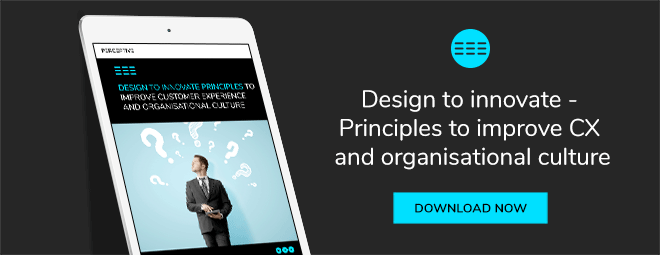Leading a team focused on a design-led way of thinking (see our design thinking ebook), is never an easy thing to do. When you're used to more traditional ways of working, adopting to a highly creative, fail-fast mentality can be challenging for some.
When you're used to more traditional ways of working, adopting to a highly creative, fail-fast mentality can be challenging for some.
1. Embrace risk
Adopting a mentality of embracing the risk inherent in change a requirement for entrepreneurs and business leaders alike.
Allowing people to take chances and take action, sometimes even without having a full picture of the problem, will go a long way towards promoting innovation, creative problem-solving and, most of all, momentum and agility.

2. Accepting ambiguity
A design-centric way of operating your business will invariably lead to having to accept some ambiguity.
It’s hard to estimate the return on design sometimes. Let’s face it—it’s a creative concept at its core. Even if it can be a highly innovative and effective way to find solutions, it can be difficult to prove return-on-investment at times.
In fact, it can be almost impossible to understand how much value will be delivered through a better experience—or more accurately, to calculate the return on an investment in creativity.
3. Adjust your expectations
Design thinking is good for certain objectives, like cutting through complexity, reinforcing innovation and visualising the future.
However, it is not what you use to streamline, or optimise your business, or any other operational method of making a business work. Even if expectations are set appropriately, they must be aligned around a realistic timeline—culture (and the way people do things) changes slowly in large organisations.
We'll lay all our cards on the table and say it's not an easy process to adopt a design-centric perspective. But it can help to create a workplace where people want to be, and in an environment where average job tenure for young workers is only one year, a place where they will want to stay.
Your organisation will be able to more rapidly respond to changing business dynamics and the way it empowers team members is something that will develop stronger professional performance and build leaders.
The empathetic nature of design will create a more human and mindful approach to business, where emotional needs are being met.
Learn more about how design thinking can improve your company culture and your customer experience, by downloading our free ebook below:
